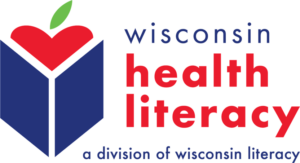*Free registration is required to use the toolkits provided within HIPxChange. This information is required by our funders and is used to determine the impact of the materials posted on the website.
Background
In 2008 the Institute of Medicine (now known as the National Academy of Medicine) recognized prescription medication labels as a vital tool to prevent adverse drug events, yet approximately half of patients across all literacy levels misunderstand dosage instructions (Institute of Medicine, 2008). The 2003 National Assessment of Adult Literacy found that just 52% of adults in the US had the intermediate health literacy proficiency necessary to be able to use a prescription label to determine what time a person should take medication.
Davis et al. (2006) found that 67.1-91.1% of English-speaking patients at varying literacy levels could correctly state how to take medication after being shown directions on five different prescription labels. In this study, 71% of patients with low literacy could read the instructions correctly, but only 35% could demonstrate how to take the medication correctly, showing that correctly reading directions does not correlate to understanding. Multiple other studies corroborate the finding that patients interpret ‘daily’, ‘two times a day’ and ‘three times a day’ in different ways. Patients may also take medications at different times every day. These issues can result in toxicity or an inadequate therapeutic response. Patients with lower literacy, who are over 65 years old, and patients who take multiple medications are more likely to misinterpret prescription directions.
Universal Medication Schedule (UMS) directions were created and tested by researchers to improve understanding of when to take medication by patients so that medication is taken as intended. UMS directions use health literacy best practices such as providing explicit ‘morning’, ‘noon’, ‘evening’, ‘bedtime’ times for medication administration and using numerals instead of spelled out numbers. UMS directions result in decreased misinterpretations of when to take medication and simplify drug regimens, which both contribute to improved medication adherence (Wolf et al., 2011, 2016, 2020; Davis, 2008).
Research supports the use of UMS directions for maintenance medications with standard dosing. The directions on medication labels reflect what prescribers write on prescriptions. Encoding UMS directions into electronic prescribing (e-prescribing) decreases the steps required for prescribers to use UMS directions. Careful planning is required to implement UMS directions into practice. This toolkit provides practical information and strategies to implement Universal Medication Schedule directions when e-prescribing so that patients receive clearer medication directions on their prescription medication labels.
Who should use this toolkit?
This toolkit is intended for healthy system or health center pharmacists, administrators, and staff.
What does the toolkit contain?
This toolkit contains:
- Background information about Universal Medication Schedule directions.
- Which stakeholders to engage during planning.
- Guidance on required key decisions for implementation.
- Messaging and educational materials.
- Timeline and staff hours.
- Lessons learned from previous implementations.
How should these tools be used?
The materials in this toolkit can be used to:
- Provide a roadmap for implementing clearer directions into practice.
- Communicate why it is important to change how prescription directions are written for patients.
- Understand the complexities of medication therapy that need to be considered for successful adoption of UMS directions.
- Measure the impact on adherence and patient experience.
Development of this toolkit
Implementing Universal Medication Schedule Directions For Use When E-Prescribing: A Toolkit for Health systems was developed by Wisconsin Health Literacy, in conjunction with academic partners, UW Health, and other health system partners.
This project was supported by the Advancing a Healthier Wisconsin Endowment of the Medical College of Wisconsin.
Please send questions, comments and suggestions to HIPxChange@hip.wisc.edu.
References
- Davis TC, Wolf MS, Bass PF 3rd, Thompson JA, Tilson HH, Neuberger M, Parker RM. Literacy and misunderstanding prescription drug labels. Ann Intern Med. 2006 Dec 19;145(12):887-94.
- Davis TC, Federman AD, Bass PF 3rd, Jackson RH, Middlebrooks M, Parker RM, Wolf MS. Improving patient understanding of prescription drug label instructions. J Gen Intern Med. 2009 Jan;24(1):57-62.
- Institute of Medicine. 2008. Standardizing Medication Labels: Confusing Patients Less: Workshop Summary. Washington, DC: The National Academies Press. https://doi.org/10.17226/12077.
- Wolf MS, Davis TC, Curtis LM, Bailey SC, Knox JP, Bergeron A, Abbet M, Shrank WH, Parker RM, Wood AJ. A Patient-Centered Prescription Drug Label to Promote Appropriate Medication Use and Adherence. J Gen Intern Med. 2016 Dec;31(12):1482-1489.
- Wolf MS, Davis TC, Curtis LM, Webb JA, Bailey SC, Shrank WH, Lindquist L, Ruo B, Bocchini MV, Parker RM, Wood AJ. Effect of standardized, patient-centered label instructions to improve comprehension of prescription drug use. Med Care. 2011 Jan;49(1):96-100.
- Wolf MS, Taitel MS, Jiang JZ, Curtis LM, Wismer GA, Wallia A, Parker RM. Prevalence of Universal Medication Schedule prescribing and links to adherence. Am J Health Syst Pharm. 2020 Jan 24;77(3):196-205.
Toolkit Citation
Wisconsin Health Literacy. Implementing Universal Medication Schedule Directions For Use When E-Prescribing. Madison, WI; 2023. Available at: http://www.hipxchange.org/UniversalMedScheduleDirections

